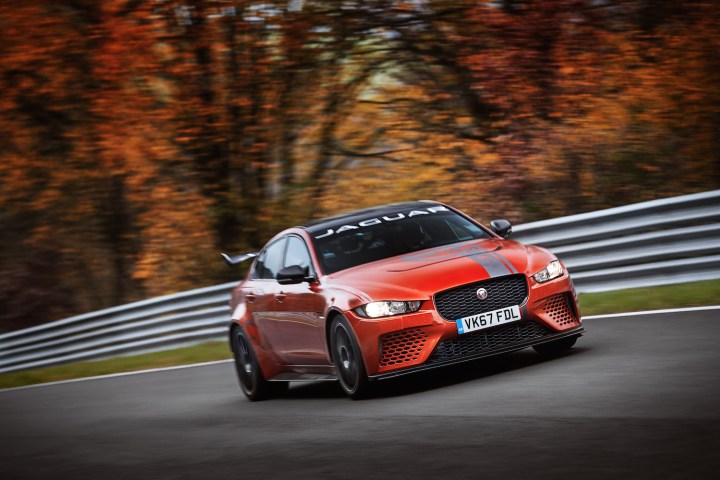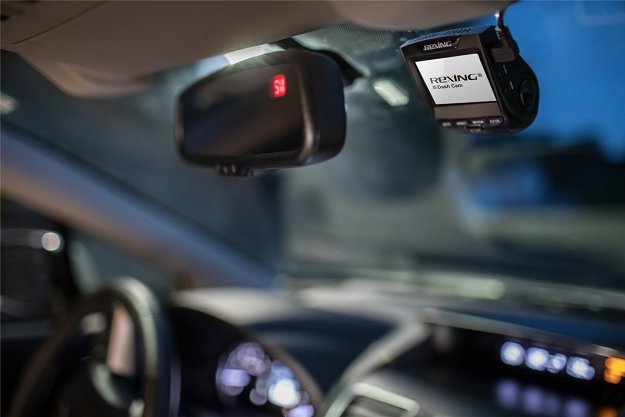
The XE SV Project 8 (isn’t that a mouthful?) set a lap time of 7:21.23 at the famous Nürburgring Nordschleife in Germany. Jag claims that’s a record for a four-door sedan that people can actually buy. But things aren’t quite as clear-cut as that.
In July, a Subaru WRX STI Type RA NBR Special lapped the ‘Ring in 6:57.5. But that car wasn’t exactly a production model. It used a stock WRX STI body shell, but was extensively modified with a roll cage, enhanced aerodynamic aids that included a Formula One-style Drag Reduction System, and a 600-hp engine. It was basically a race car doing an impression of a road car.
Hence Jaguar’s claim of a record despite not beating the Subaru. Jag claims the XE SV Project 8 lapped the track 11 seconds quicker than the next-fastest comparable sedan. Yet while it is technically a production model in that people can actually buy one, some caveats do apply to the XE SV Project 8’s performance at the ‘Ring.
The car Jaguar used for the record attempt was in “production-intent specification,” meaning it was a preproduction version. That probably didn’t make a difference, but it’s something to keep in mind. Jaguar didn’t literally pull a car off the production line and send it out onto the track. The XE SV Project 8 is also an extremely rare, limited-edition model. Only 300 will be made, and it retails for $188,495 in the United States.
Regardless, this monster Jaguar’s Nürburgring lap time is pretty impressive. Any time under eight minutes used to be considered supercar territory, so being able to pull off such a quick time is a badge of honor for the XE SV Project 8. The car’s other performance figures are similarly bonkers: 0 to 60 mph in 3.3 seconds (it’s the quickest-accelerating Jaguar production model ever) and a top speed of 200 mph.


